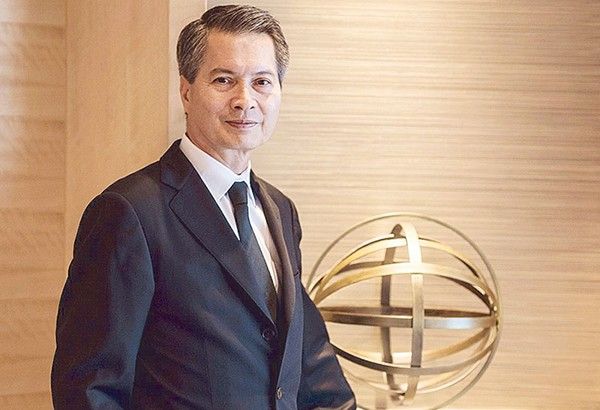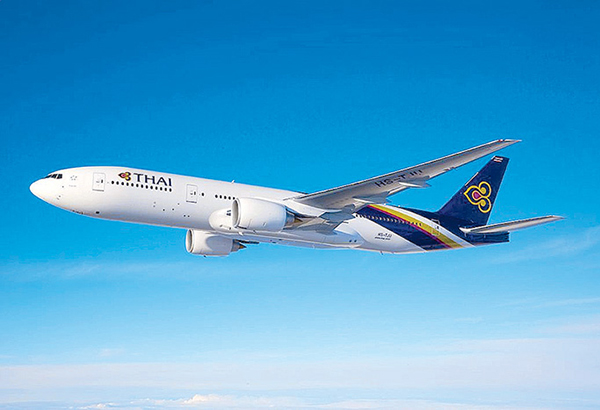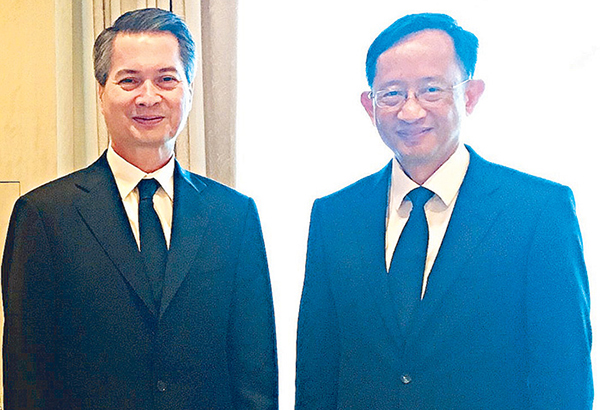Captain of the fleet

At the time Thai Airways was encountering some bumps on its growth path, the airline put a Harvard-educated banker and former stock exchange president at the controls.
And now, the airline is flying “smooth as silk” once more. Khun Charamporn Jotikasthira, the suave president of Thai, who was in Manila recently to attend the Association of Asia Pacific Airlines’ 60th Assembly of Presidents at the Shangri-La at the Fort, thinks it’s probably because just like the stock exchange, the airline needed someone seasoned in facing risks and managing them.
“All three — the bank, stock exchange and the airline — have one thing in common. Lots of risks. And it requires a lot of risk management. So basically, financial risks or operational risks, or planning risks — we all have them,” says Khun Charamporn.
And he has earned his stripes: aside from an MBA from Harvard, he has degrees in Electrical Engineering and Computer Science from the Massachusetts Institute of Technology.
Last year, Khun Charamporn said Thai Airways was on the path of recovery and coming to terms with fierce global competition and this year, even more so.
“Yes, especially with the fierce competition, definitely,” he says. “Large carriers, like the Middle Eastern carriers, are still growing and the penetration of the low-cost airlines, especially in Thailand, is among the highest in the world. It’s now 53 percent penetration.”
Khun Charamporn sees the situation as clearly as a captain sees the skies ahead on a clear day. For one, Bangkok has two airports (Suvarnabhumi and Don Muang) — an advantage that also has its downside.
“When combined, they are the largest in the ASEAN region already,” Khun Charamporn reveals. “Combined, they’re 60 percent larger than Changi Airport in Singapore. This means more passengers and number of flights. The prospect of Thailand for passengers is good, but the competition is really fierce.”
Of all the planes that fly into Bangkok, only 30 percent belong to the Thai Airways fleet, which includes state-of-the-art A380s as well as the dynamic and highly efficient B787 Dreamliners and the brand new A350.
The upgrading of its fleet was part of the “transformation” that Khun Charamporn revved up.
“When we started the recovery, or rather the transformation, we had to shrink back a bit, but now we’re going back again. We just received two brand new aircraft, Airbus 350. We just flew to Rome and Milan, so the two aircraft go to Milan and Rome,” he announces proudly

* * *
Part of the bumps on its flight path were financial, admits the Thai Airways president, whose boyhood dream was actually to become a pilot!
“Yes, we were in financial difficulties. But it was a result of many things — like environment changes. In the past, we used to be strong because Thailand was a growth destination. In the past, we did not have much competition. The environment that changed was that the capacity of the aircraft (to fly long haul) changed. Before, we were the hub that everyone needed to stop in to refuel. Before, when you wanted to go to, say, Australia, or Indonesia, you needed to stop in Bangkok first because the aircraft couldn’t fly that far. But today, you can, directly. Now, you don’t need to stop in Bangkok anymore,” he points out pragmatically.
The last 15 years of the new millennium also saw the strengthening of the Middle Eastern carriers. “By being positioned in the Middle East, you actually become the center of the world because you can fly everywhere in the world from there with a single aircraft because the aircraft goes longer. So since then, we’ve seen the pretty high growth of the Middle Eastern carriers,” Khun Charamporn discloses.
A third “air pocket,” so to speak, that Thai Airways faced on its flight path was the popularity of the low-cost airline, an innovation that started in the US in the ‘70s, which picked up in Asia in the last decade.
“We did not change as fast as the environment in the industry changed. So, we had to find a new way of doing things. So, we needed to go back and rethink like any other organization. The environment changed too fast and if we cannot change, then we’ll be in trouble.”

* * *
With the cool calculation of a computer engineer and the presence of mind of a seasoned pilot facing turbulence, Khun Charamporn acted quickly, but not rashly.
First, he stopped the “don’ts.”
“For example, any routes that we fly where we keep on making a loss, for sure — just stop doing it. For example, routes to LA, Moscow, Madrid, South Africa. If we don’t make any money, we need to stop. By the book, we need to stop and just stop it. Secondly, we also grounded 38 aircraft. We just grounded them. It’s better than flying (but losing money). And we sell those aircraft.”
Thirdly, they trimmed down their staff by offering early retirement.
“We call it ‘stop bleeding, stop the don’ts.’ Anything you’re not supposed to do, don’t do it!” he emphasizes.
The second phase of Thai Airways’ transformation under Khun Charamporn’s leadership was “strength building.”
“This one is ‘start the dos’,” he points out. “If there is anything we need to do right, just do it.” From planning to marketing, Khun Charamporn demanded sky-high standards.
“You do the proper planning to make sure that all the flights coming from the West of Bangkok can connect to the East of Bangkok. For example, from Australia to Europe. The flight has to connect within two hours. So we needed to do new planning. The ability to sell had to be better. Before, we only sold about 68 percent of seats. But the rest of the world could sell 80 percent, so we needed to know how to do that. But in order to sell up to 80 percent, we needed a lot more effort.”
And then the polishing of the jewel in Thai Airways’ crown — its renowned service.
“We need to focus on service. Our service used to be the best in 1982 but maybe we stayed in 1982 while the rest of the world was moving. For example, the food, the way we serve. Now the best serve like a five-star hotel or a three-star Michelin restaurant. We need to serve like that onboard as well,” demands Khun Charamporn, who looks forward to good food, nice champagne or wine, and time to relax and sleep soundly during long-haul flights. Therefore, he knows what the busy passenger looks forward to.
“The service on Thai is excellent from the first step — when you come onboard. Actually they provide service in eight stages, starting from the time you go onboard until the time you disembark. From introduction, to the first engagement to the service, the food, and then relax, and then revitalize when you wake up and refresh before disembarkation. So all the steps are done systematically in a nice way with a Thai touch,” he describes the unique Thai service on board.
“As a ‘First Choice Carrier with Touches of Thai,’ Thai’s philosophy is to have our valued passengers experience the much admired Thai culture and hospitality as soon as they board the aircraft and experience our world renowned ‘Smooth As Silk’ Royal Orchid Service,” adds Thai Airways GM in the Philippines Polapat Neelabhamorn.
* * *
So what’s ahead for the flag carrier of the Kingdom of Thailand as it aims to not just fly, but soar?
It aims to continue being a global, premium and world-class airline with its three core values: “Thai touch,” “world class” and “high trust.”
Khun Charamporn is also gearing up for sustainable growth.
“Which means, we have to finish all the don’ts and all the dos, and so we should be ready to go back and compete with the world-class competitors again. We spent two years revitalizing, so the third year’s goal is basically to jump back in the ring again. If you’re an Olympic-class athlete, then you go back in again. Start to expand. Next year, we’re going to be receiving seven more aircraft — five Airbus 350 and then two Boeing 787s. So we’re going to have many new routes.”
As for himself, the captain of Thai Airways remains hands on at the controls, ready for all kinds of weather, well-versed in the dos and don’ts of staying the course and flying even higher.
(Effective Dec. 1, Thai Airways will operate double daily flights between Manila and Bangkok, one leaves in the afternoon and the second flight leaves in the evening.)
(You may e-mail me at [email protected].)
- Latest





























